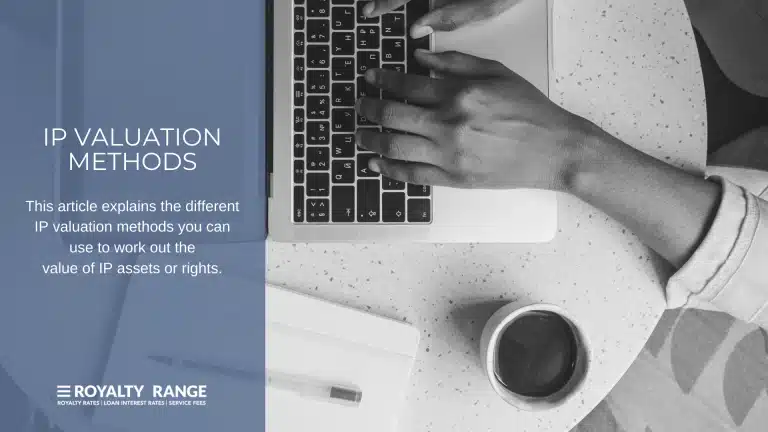IP valuation methods

Kris (Kestutis) Rudzika |
November 11, 2020

Are you wondering how to value IP? Perhaps you are looking to buy, sell or license IP, or you need to know the value of your business’s IP for a merger or acquisition. This article explains the different IP valuation methods you can use to work out the value of IP assets or rights.
(Need more information on IP valuation? Read our blog ‘What is IP valuation?’.)
3 main IP valuation methods
There are three main types of IP valuation methods: 1) market-based methods; 2) cost-based methods; and 3) income-based methods. Below, we’ll look at each of the approaches in detail, including what they are, how they work, example scenarios, and pros and cons.
Market-based method
What it is
The market approach valuation method determines the value of an IP asset by looking at the value allocated to comparable IP assets in transactions between unrelated parties.
How it works
In order to accurately apply a market-based method, you need access to data on similar IP assets being transacted. You can use a specialist database like RoyaltyRange to find reliable comparables. You can then analyze the prices or royalty rates set in the transactions to get an idea of a fair value for the IP. Keep in mind that you may need to make adjustments to reflect the business context of the transaction (for example, litigation, bankruptcy, etc.).
Example scenarios
You may use a market-based method in the following scenarios:
- Licensing deals – determining fair royalty rates for licensing IP
- Corporate disputes – justifying the business’s value during a corporate disagreement
- Tax defenses – presenting your business valuation for the tax authorities
- Business purchases/sales – setting a fair price for the purchase/sale of a business
Pros and cons
Pros:
- Straightforward and direct
- Based on real data
- Not dependent on estimates or forecasts
Cons:
- Difficult to find reliable comparables data (but this is simple with RoyaltyRange)
- Data must meet strict comparability criteria (RoyaltyRange takes care of this)
Cost-based method
What it is
The cost approach to valuation bases the IP’s value on the cost of creating and developing it.
How it works
Cost-based methods involve calculating the costs of creating and developing an IP asset, including machinery, equipment, labor, legal protection, testing and trials, and overheads. This is either the historical costs of creating and developing the IP being analyzed, or the costs that the organization would incur if it were to create and develop a similar IP asset. The reason the costs are aligned with value is because, if an organization were to buy the IP rights from the IP owner, they would not incur these costs (as the IP is already developed).
Example scenarios
You may use a cost approach to valuation for the following scenarios:
- Patent valuations
- Portfolio valuations
- Mergers and acquisitions
- Seeking investment
- Licensing IP
Pros and cons
Pros:
- Easy to access relevant internal data
Cons:
- Doesn’t take into account the market value of the IP
- Doesn’t consider the future value or market potential of the IP
Income-based method
What it is
Income-based valuation methods base value on the income the IP is expected to generate in the future, and the economic benefits it will bring a company over its useful economic life.
How it works
Income-based methods involve forecasting potential future revenues, risks and costs of the IP. You will need to use these to calculate the IP’s net present value (NPV), and this figure will either be positive or negative. Three examples of income-based valuation methods are the discounted cash flow (DCF), capitalization of earnings, and relief from royalty methods.
Example scenarios
You may use an income-based valuation method for the following scenarios:
- Selling/buying a business
- Licensing an IP asset
Pros and cons
Pros:
- Flexible to different types of IP at different stages of development
Cons:
- Relies on hypothetical future forecasts, rather than real data
- A fairly complicated method to carry out
Find comparables for your IP valuation today
You can use the RoyaltyRange database to find recent comparables data for your IP valuation. Our One Search service lets you access the database for a one-off search – no subscription needed. You’ll get a full report of licensing agreements that meet your criteria.
To find relevant comparables, simply enter your search criteria into the One Search form.
Request One Search
We will perform the search and deliver the initial results within hours, at no cost.




